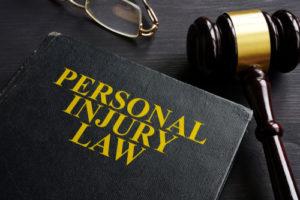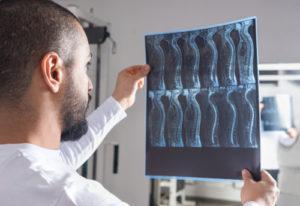

If you’ve been injured in the state of Ohio by the actions of someone else, then you usually have a right to file a personal injury claim or lawsuit for damages. However, proving you suffered damages is not enough to get you the compensation that you likely need.
You will also have to prove the fault of the person responsible for you injuries. For a brief explanation of how to prove fault in a personal injury case (and why doing so matters!), refer to the following.
Determining Negligence
The first part of proving fault in a personal injury case is proving that the other party involved acted negligently. Negligence is the legal term for a violation of a standard of care or acting unreasonably. There are two major parts to proving negligence that your claim must establish.
First, you must prove that the person responsible for the accident had a legal duty of care to you, the plaintiff. Usually, this duty is easy to prove. For example, the driver of a car has a duty to drive responsibly and reasonably to exercise care for all others who share the road: other drivers, pedestrians, bicyclists, etc.
Second, you must prove that there was a breach of duty. If your injuries were caused by a car accident, then you could prove a breach of duty by establishing that the other driver was drunk at the time of accident and was driving erratically.
For a free legal consultation, call (614) 538-1116
Proving Causation and Damages
After you have proven that the other person involved in the accident (the defendant) acted negligently, you must also prove causation and damages. Causation means that the defendant’s negligent actions actually caused your injuries. So if the drunk driver mentioned above was driving erratically, you can prove that this led to your accident as he struck your vehicle.
You can establish causation through any or all of the following.
- Eyewitness testimony
- Physical evidence
- Photographs
- Accident reconstructionist testimony
Damages, on the other hand, refer to damages that you, the claimant or plaintiff, incurred as a result of the accident and injury.
Damages may include these things.
- Medical expenses
- Loss of use of a limb or other physical function
- Property damages
- Lost wages
You may prove the damages you’ve suffered by presenting medical bills, evidence of lost wages, pain diary entries, medical testimony, and more.
Understanding Ohio’s Comparative Fault Laws
Proving fault is an essential part of recovering the compensation to which you’re entitled. Additionally, because Ohio has comparative fault laws on the books for certain types of accidents, like car accidents, if you can’t prove that your injures are 100 percent the fault of the defendant, then your compensation amount may be reduced by your percentage of fault. If you’re more than 50 percent at fault, then you cannot recover any damages.
Click to contact our personal injury lawyers today
An Attorney Can Help You Prove Fault So You Can Recover Damages
A big part of proving fault and negligence is gathering evidence and presenting a solid case to an insurance company or judge. An attorney can help you do both. Contact Bressman Law immediately to start working on your case. Reach us today at (614) 538-1116 or via our online contact form.
Call or text (614) 538-1116 or complete a Free Case Evaluation form








